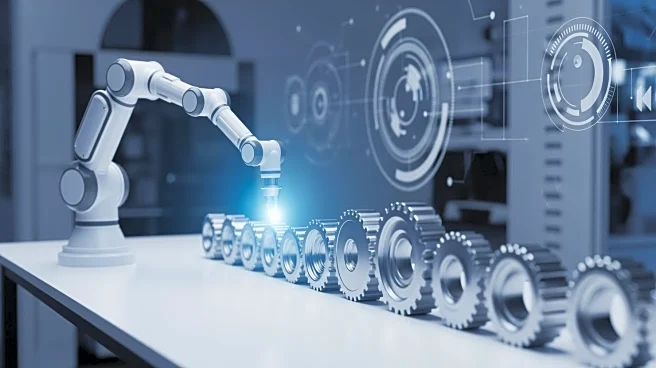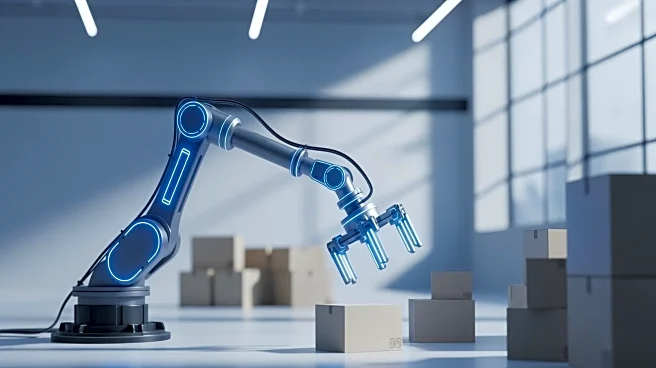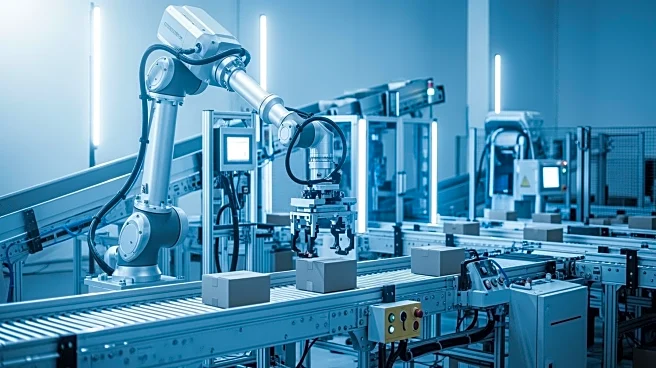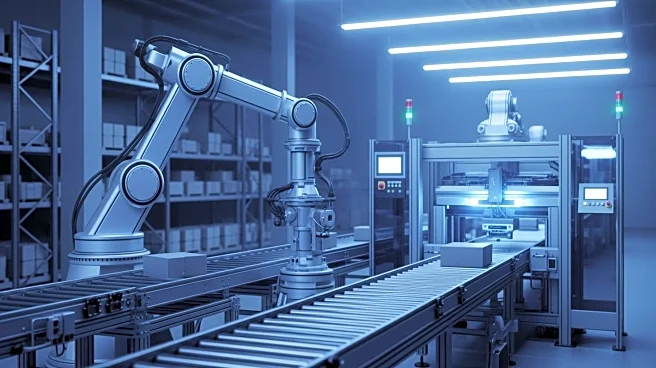What's Happening?
Amazon is reportedly planning to significantly increase its use of robots in its operations, potentially replacing up to 600,000 human jobs by 2033. According to internal documents cited by The New York Times, the company aims to expand its robotic workforce
to meet growing demand without hiring additional human workers. This move could lead to substantial job reductions, although Amazon has not confirmed any specific layoff plans. The company has been using robots in its warehouses for over a decade and is now looking to further integrate automation into its operations. Amazon is also reportedly considering strategies to mitigate the impact on communities that may lose jobs, such as participating in local events and avoiding terms like 'automation' and 'AI' in favor of 'advanced technology' and 'cobot' to suggest collaboration.
Why It's Important?
The potential replacement of 600,000 jobs with robots by Amazon could have significant implications for the U.S. labor market, particularly in the warehousing and delivery sectors where Amazon is a major employer. As the third largest employer in the U.S., behind the federal government and Walmart, Amazon's workforce changes could influence employment trends and wage levels across the country. The integration of more robots could lead to efficiency gains and cost savings for Amazon, but it also raises concerns about job security and the future of work for many employees. While Amazon claims to be a major job creator, the shift towards automation highlights the ongoing tension between technological advancement and employment stability.
What's Next?
Amazon's plans to increase its robotic workforce will likely prompt discussions among policymakers, labor groups, and industry stakeholders about the future of work and the role of automation in the economy. The company may face pressure to ensure that displaced workers are supported through retraining programs or other initiatives. Additionally, Amazon's approach to mitigating community impacts and its communication strategy regarding automation will be closely watched. As the company continues to expand its operations, the balance between technological innovation and job creation will remain a critical issue.
Beyond the Headlines
The ethical and social implications of Amazon's automation strategy extend beyond immediate job losses. The shift towards robots raises questions about the long-term sustainability of employment in sectors heavily reliant on manual labor. It also highlights the need for policies that address the potential displacement of workers and ensure equitable access to new job opportunities created by technological advancements. As automation becomes more prevalent, the cultural perception of work and the value placed on human labor may undergo significant changes.













